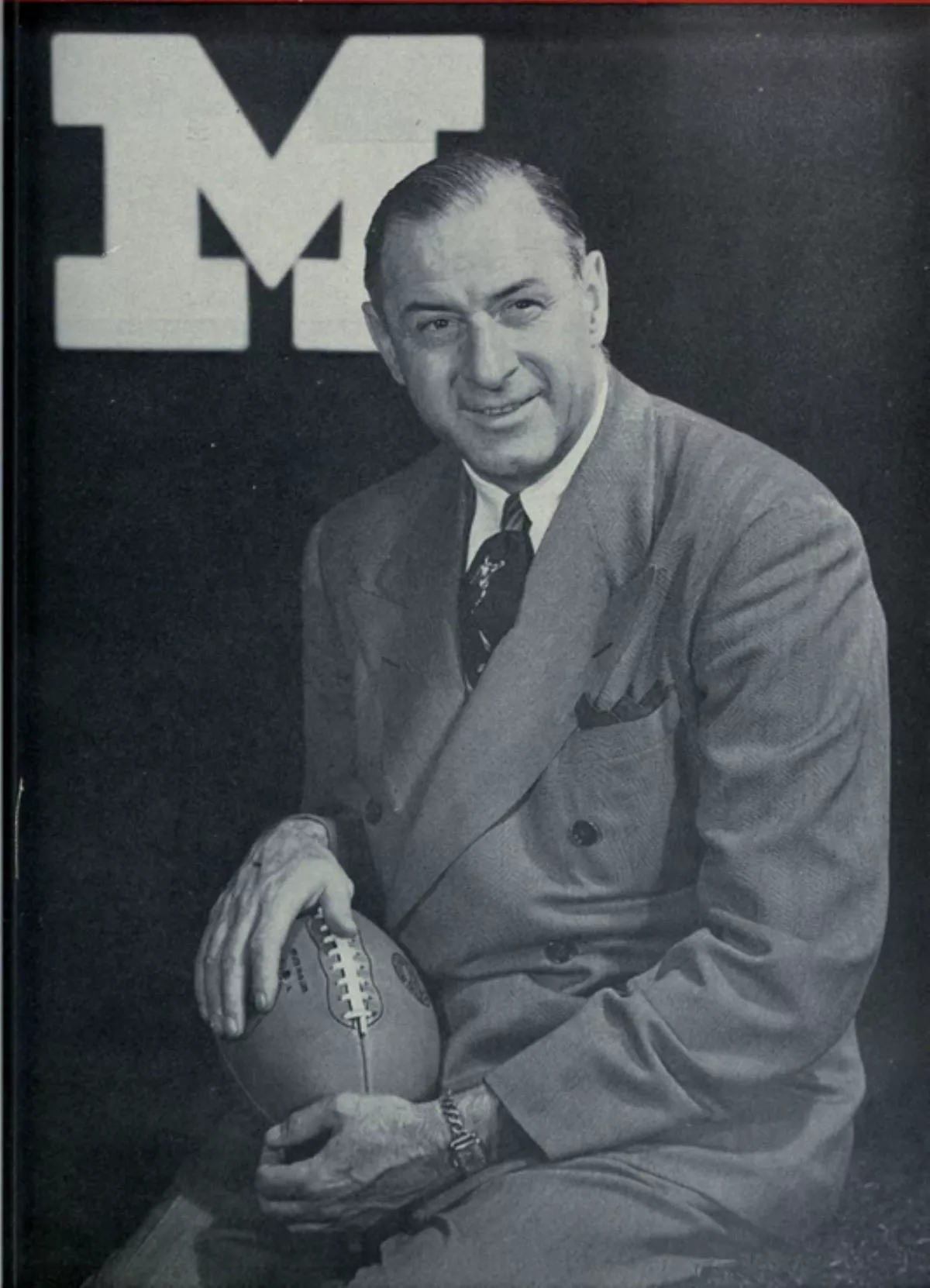 1.
1. Herbert Orin "Fritz" Crisler was an American college football coach who is best known as "the father of two-platoon football", an innovation in which separate units of players were used for offense and defense.

 1.
1. Herbert Orin "Fritz" Crisler was an American college football coach who is best known as "the father of two-platoon football", an innovation in which separate units of players were used for offense and defense.
Fritz Crisler coached at the University of Minnesota and Princeton University.
Fritz Crisler introduced the distinctive winged football helmet to the Michigan Wolverines in 1938.
Fritz Crisler had first introduced the winged helmet design at Princeton in 1935.
Fritz Crisler retired from coaching after the 1947 season and served as the University of Michigan's athletic director from 1941 to 1968.
Fritz Crisler was a member of the NCAA football rules committee for 41 years and its chairman for nine years.
Fritz Crisler participated in football at Mendota High School and was an outstanding student.
Fritz Crisler often told the story of his introduction to college football.
Fritz Crisler recalled that he wandered over the football field as a freshman, where he saw the legendary coach Amos Alonzo Stagg directing a practice session.
Fritz Crisler played at the end position for Stagg's Chicago Maroons from 1919 to 1921.
Fritz Crisler became an all-around athletic star at the University of Chicago, winning a total of nine varsity letters, three each in football, baseball and basketball.
Fritz Crisler remained an assistant coach at Chicago for eight years.
In 1930, Fritz Crisler was hired as the athletic director and head football coach at the University of Minnesota.
Fritz Crisler was the head coach of the Minnesota Golden Gophers football program for two seasons in 1930 and 1931.
Fritz Crisler introduced two innovations that later came into general usage.
Fritz Crisler served as Michigan's head football coach from 1938 to 1947.
When he took over as head coach at Michigan in 1938, Fritz Crisler introduced the distinctive winged football helmet which has since become one of the symbols of Michigan Wolverines athletics programs.
Fritz Crisler developed a similar winged helmet pattern in 1935 while coaching at Princeton.
Fritz Crisler created the distinctive design to help his halfbacks find receivers downfield.
Fritz Crisler's 80.5 winning percentage ranks him second in school history behind only Fielding H Yost.
Fritz Crisler's most noted players at Michigan included Heisman Trophy winner Tom Harmon, Bob Chappuis, Forest Evashevski, Bump Elliott, Pete Elliott, Albert Wistert, Bob Westfall, Ed Frutig, and Julius Franks.
Fritz Crisler unveiled the system in 1945 in a game played at Yankee Stadium against Army.
Sometimes, watching from the side lines, even Coach Fritz Crisler isn't sure which Michigan man has the ball.
Fritz Crisler ran practices rigidly and we called him 'The Lord.
Fritz Crisler was a Douglas MacArthur-type figure, handsome and rigid.
When Crisler was recruited from Princeton to Michigan, it was agreed that he would take over as Michigan's athletic director when Fielding H Yost retired.
Yost retired in 1941, and Fritz Crisler became the athletic director at that time.
Fritz Crisler continued to hold that position for 27 years until his retirement in 1968.
Fritz Crisler was inducted into the College Football Hall of Fame in 1954.
Highlights of the athletic programs during the 28 years of the Fritz Crisler era include the following:.
Fritz Crisler invested revenues from the school's successful football program to build a $1 million pool for the women's swimming team, a men's varsity competition pool, a modern baseball grandstand and a large press box at Michigan Stadium.
In 1978, Crisler and Fielding H Yost became the first coaches inducted into the University of Michigan Athletic Hall of Honor; the only persons inducted ahead of Crisler and Yost were athletes, Gerald Ford, Bill Freehan, Tom Harmon, Ron Kramer, Bennie Oosterbaan, Cazzie Russell, and Bob Ufer.
Fritz Crisler had been hospitalized twice in his final months, once for pneumonia.